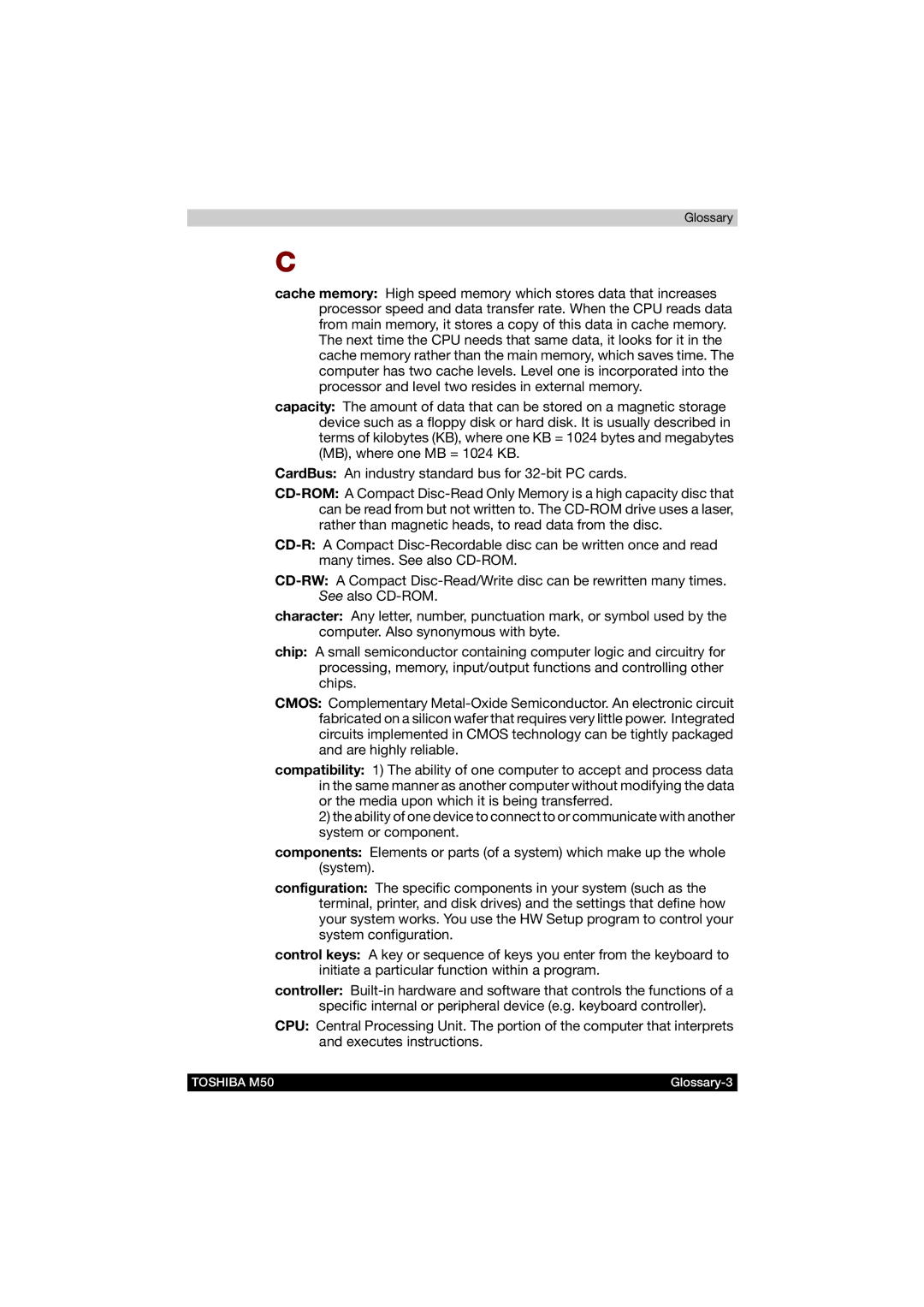Glossary
C
cache memory: High speed memory which stores data that increases processor speed and data transfer rate. When the CPU reads data from main memory, it stores a copy of this data in cache memory. The next time the CPU needs that same data, it looks for it in the cache memory rather than the main memory, which saves time. The computer has two cache levels. Level one is incorporated into the processor and level two resides in external memory.
capacity: The amount of data that can be stored on a magnetic storage device such as a floppy disk or hard disk. It is usually described in terms of kilobytes (KB), where one KB = 1024 bytes and megabytes (MB), where one MB = 1024 KB.
CardBus: An industry standard bus for
character: Any letter, number, punctuation mark, or symbol used by the computer. Also synonymous with byte.
chip: A small semiconductor containing computer logic and circuitry for processing, memory, input/output functions and controlling other chips.
CMOS: Complementary
compatibility: 1) The ability of one computer to accept and process data in the same manner as another computer without modifying the data or the media upon which it is being transferred.
2)the ability of one device to connect to or communicate with another system or component.
components: Elements or parts (of a system) which make up the whole (system).
configuration: The specific components in your system (such as the terminal, printer, and disk drives) and the settings that define how your system works. You use the HW Setup program to control your system configuration.
control keys: A key or sequence of keys you enter from the keyboard to initiate a particular function within a program.
controller:
CPU: Central Processing Unit. The portion of the computer that interprets and executes instructions.
TOSHIBA M50 |
|
